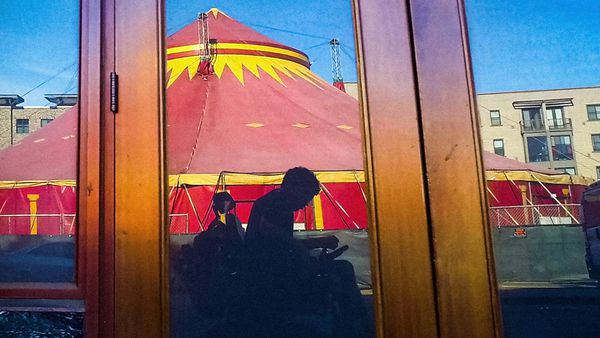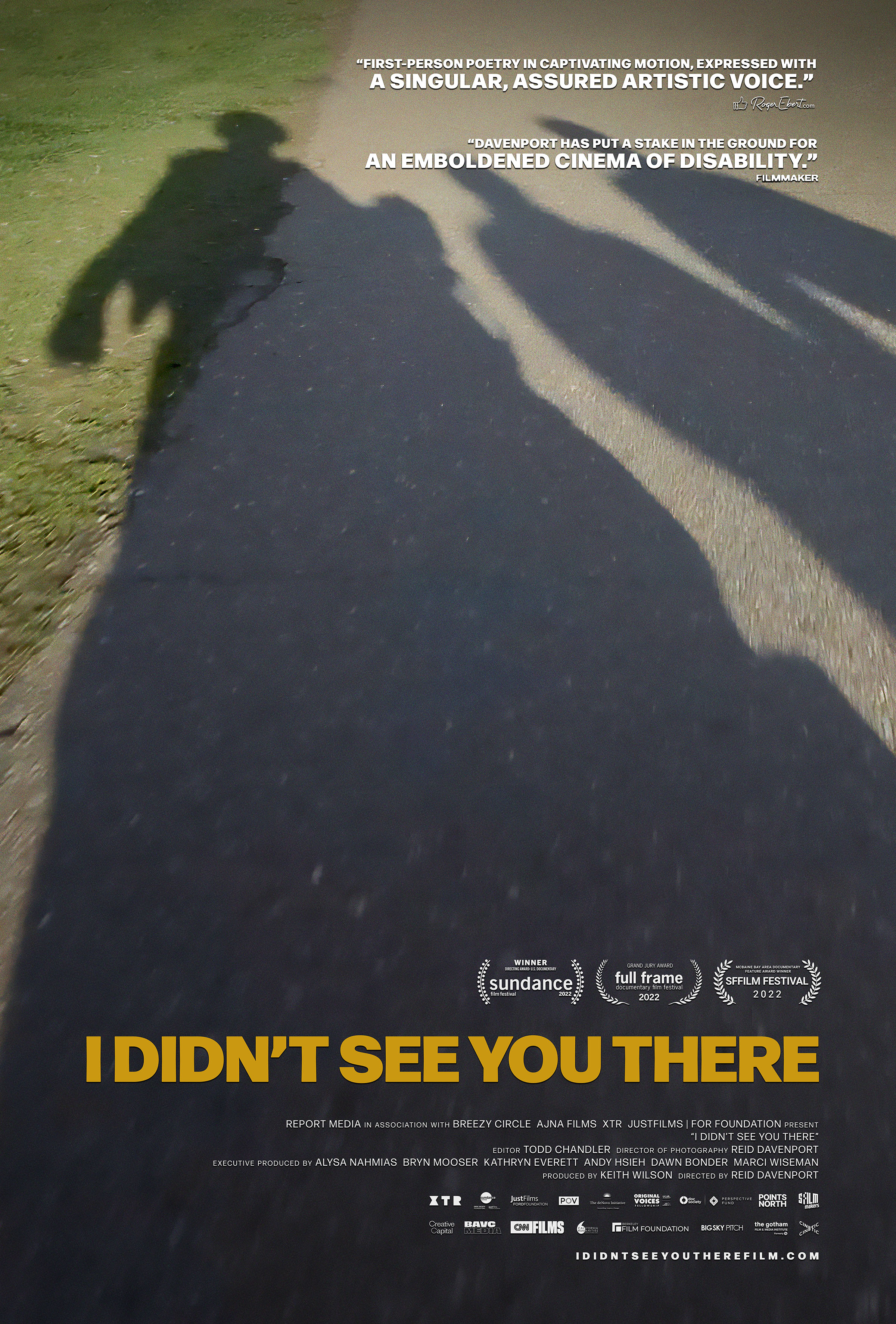Eye For Film >> Movies >> I Didn’t See You There (2022) Film Review
I Didn’t See You There
Reviewed by: Jennie Kermode

There are 3.3 million wheelchair users in the US and 1.2 million in the UK, so how come we almost never see them in films, let alone see films shot from that perspective? Cinema’s failings in this regard are an extension of a wider social experience of invisibility which filmmaker Reid Davenport sets out to explore in this documentary.
Although it’s his first feature length film, this isn’t Reid’s first venture into filmmaking. He’s previously made work about how he is perceived by others, but the big difference here is that he has obtained a camera which he’s able to operate himself, so that he can share the world as he sees it rather than being seen. The difference between these things forms one of the film’s central arguments as Davenport’s attention is captured by the appearance of a circus tent near his Oakland apartment. To him, as to many disabled people, this is anything but a cheerful presence, conjuring up memories of freak shows in which disabled people were presented as spectacles to be stared at. He references some of the best known examples and emphasises the dehumanisation involved in the process – people being looked at but not seen.

It’s a perspective coloured by male privilege, which he seems unaware of. For others who become disabled, objectification is far from being a new experience. What’s likely to stand out to able-bodied viewers here is the overlap between the feeling of being stared at and the ease with which people fail to notice that he’s there at all, or to consider how their behaviour affects people in his position. A group of people loading a car beside a lowered kerb apologise when he asks if they’ll be long, and hurry on their way. A driver honks at him on a crossing as if failing to recognise who has right of way. Though it’s not raised directly, these incidents help to illustrate a common problem faced by wheelchair users: that it’s impossible to know how long any given journey is going to take, because one never knows how many such issues will arise.
This is Davenport’s home territory, and he knows it well; one can tell from the speed with which he moves through it, obviously confident of the condition of the pavement, even choosing on occasion to look up at the sky as he moves. At other times, he points his camera at the ground, explaining how, being closer to it, he notices more detail there. We see the markings in and around a metro station, the vivid colours of a rainbow crosswalk; we see the textures of the ground. At one point, he and a friend rant about cobblestones (viewers are left to figure out why for themselves – they may be picturesque but they really rattle one’s bones). In really safe and familiar spaces, such as his own apartment, Davenport is able to get up and walk for short distances. It’s good to see this addressed, as it’s something which most wheelchair users can do, yet it’s frequently subjected to ridicule when witnessed by others, who seem to think that human legs are like robotic ones and either function or don’t, with no capacity to hurt or to get tired really fast.
Beyond familiar territory, things get more complicated. A trip on an aeroplane means having to deal with airport wheelchair assistance services, which are delayed on arrival, though they go pretty smoothly overall and one imagines Davenport being frustrated that he wasn’t able to capture the more severe problems routinely faced by disabled people in this context. What he does capture is the sympathy of the flight staff, who are frequently left having to pick up slack where others fail. Elsewhere, however, offers of assistance are less welcome, as they come unsolicited in situations where he would rather be left to his own devices. The more public nature of disabled bodies in society, and the difficulty in maintaining a private existence, thus become clear.
Whilst all this is valuable, at 76 minutes the film feels a little stretched. As part of Davenport’s argument is that he shouldn’t be perceived first and foremost in relation to his disability, it would be nice to know a little more about who he is beyond that – not just the fact that he has friends, which is introduced rather artificially (though with some humour), but what his passions are and what occupies him when he’s not thinking about the non-normativity of his body. One also worries that the framing of the film may lead able-bodied viewers to take away the message that this is the experience of wheelchair users, rather than an experience, aspects of which are far from typical. Nevertheless, this is an important film. One hopes that seeing it will prompt some people in the film industry itself to think about the wealth of opportunities offered by inclusion, and all the untold stories waiting for their moment on the screen.
Reviewed on: 30 Sep 2022















